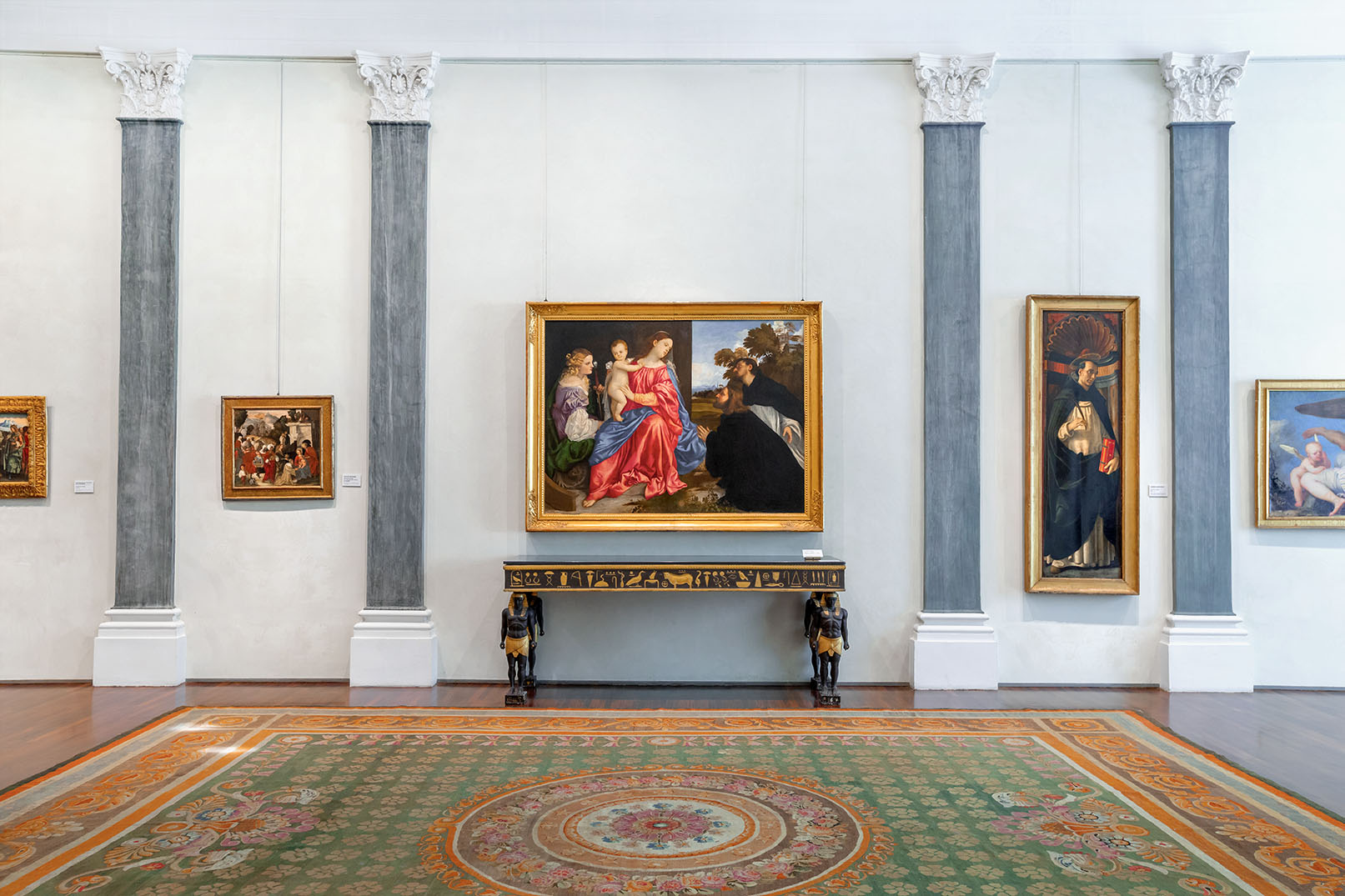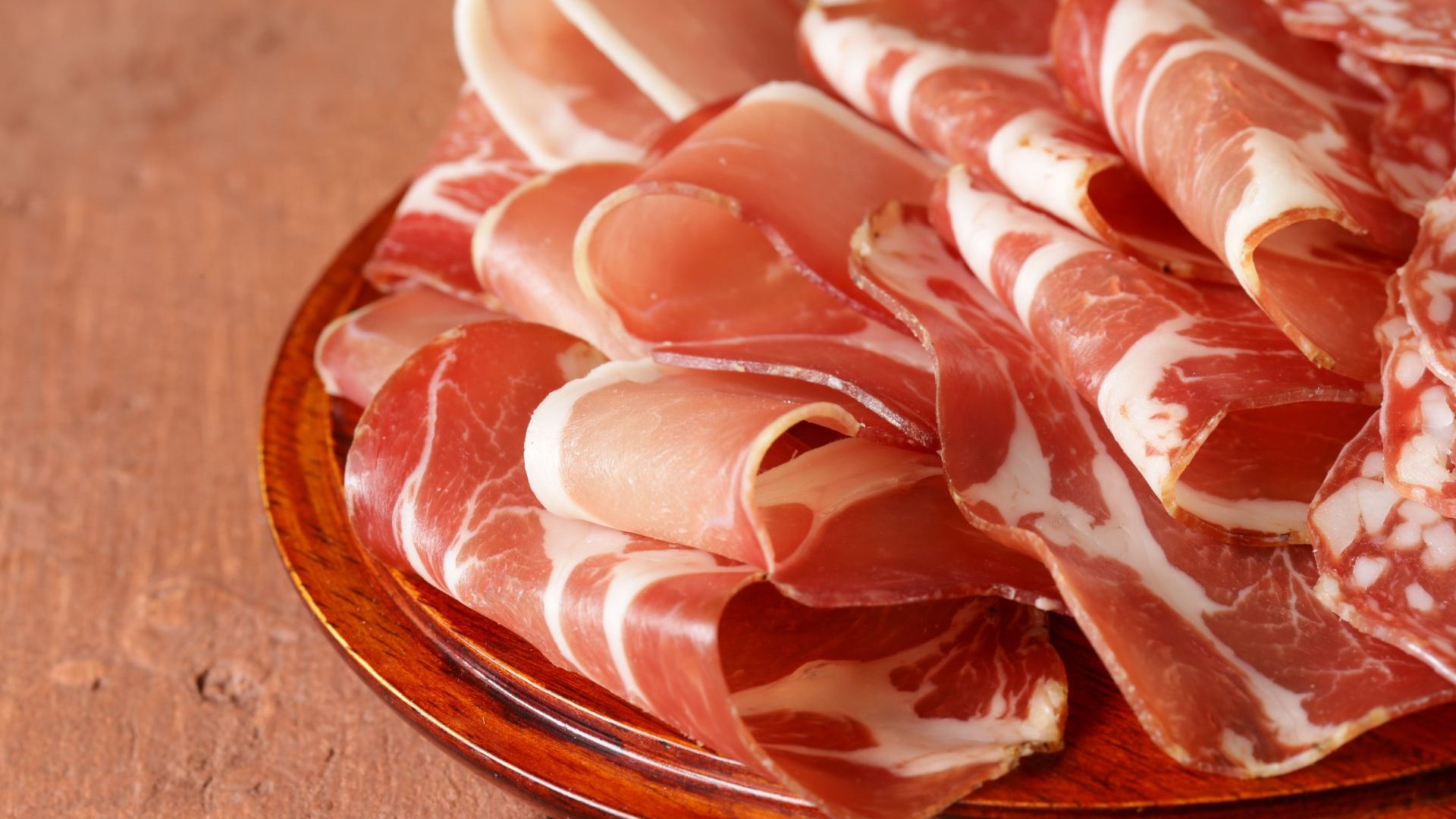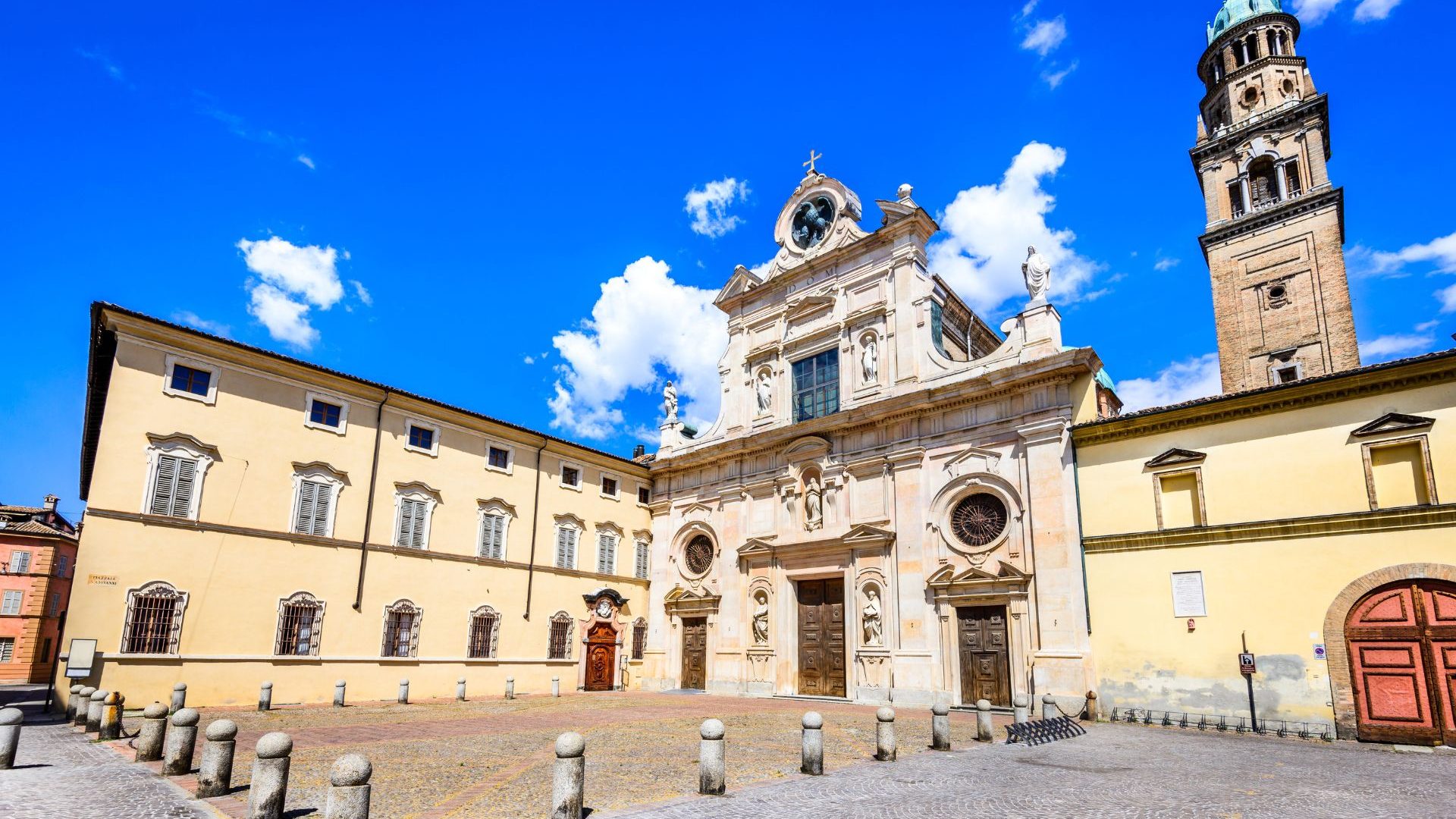Unforgettable destinations.
Places in which to indulge, regenerate body and spirit: a stay at Terme di Monticelli also means discovering a land rich in traditions, history and culture, including gastronomy.
Here are some tips for discovering a land with an authentic flavor.

In Mamiano di Traversetolo, that is, a few minutes’ drive from Terme di Monticelli, the Magnani Rocca, houses the masterpieces collected during the lifetime of Luigi Magnani, a great intellectual passionate collector and man of art.
His house, now a museum, is surrounded by a park with ancient trees, peacocks and an elegant bistro.
Room after room reveals masterpieces by Francisco Goya with “The Family of the Infante Don Luis” by Albrecht Dürer, Rubens, Van Dyck , Tiepolo.
and Giorgio Morandi most of all, the painter friend whose works are displayed on the upper floor along with canvases by Monet, Cézanne and Renoir.
The diverse and eclectic collection reflects Luigi Magnani’s approach to works of art: barrier-free, with interests in every historical period and in artists who were able to recreate formal purity.
Throughout the year, temporary exhibitions enrich the itinerary.
The calendar is on the website.
(magnanirocca.it)
Montechiarugolo Castle
In the immediate vicinity, Montechiarugolo is a village with a castle built on the remains of a 13th-century manor and destroyed in 1313.
Its appearance now is the same as Guido Torelli, knight and condottiere of the Visconti family, wanted in the 15th century.
A climb leads up to the castle.
It is open to the public with paid guided tours from March to November, and in the remaining months by reservation.
The tour includes a visit to the state apartment (Salone delle feste, Camera di Mezzo, delle Sirene, and dei Gatti), the 15th-century loggia on the Enza, the Camera Picta del Baglione, and the patrol walkway on the terraces (castellodimontechiarugolo.it)
Bianello Castle
Built on a natural balcony the view sweeps to the Alps, the castle was the residence of Matilda of Canossa.
Inside the apartments are well-preserved 17th-century frescoes by Bolognese painters Gian Giacomo Monti and Baldassarre Bianchi.
At its foot, L’Oasi di Bianello, stretches over the four Castelli hills (Zane, Lucio, Vetro, Bianello) for about 190 hectares.
It is an environment of the lower Emilian Apennines, with altitudes around 300 meters, made up of forests, small grasslands, scrublands and more than 130 species of birds: a birdwatcher’s paradise.
Canossa Castle
Although only the ruins remain, it is worth a stop.
The setting is as fascinating as the story it tells.
On January 27, 1077, Emperor Henry IV, stood for three days kneeling in front of the gate to receive the lifting of his excommunication from Pope Gregory VII.
Votigno
A small hamlet that was a refuge for Matilda’s troops, then a village of farmers and artisans was carefully restored in the 1960s by volunteer artisans.
Today it is a small work of art with stone houses and an original checkerboard square in the center.
It houses The House of Tibet, a Buddhist cultural center and the Tibet Museum opened by the Dalai Lama in 1999.
It houses rare objects of Tibetan culture along with photographs by Fosco Maraini (casadeltibet.it)
Torrechiara Castle
It is just a few minutes’ drive from the center of Langhirano, land of prosciutto.
An example of 15th-century architecture, it is a symbol of the civilization of beauty that spread manors, fortresses and fortresses in Emilia.
Imposing and scenic, it was photographed, Instagrammed and filmed by Bernando Bertolucci.
It was designed by Pier Maria Rossi, a man of arms and culture.
Massive and well-protected it was meant to ward off any enemy siege, but also to welcome his beloved Bianca Pellegrini, whose story is celebrated by Benedetto Bembo in the paintings inside the Camera d’Oro.
The walls are covered with terracotta tiles depicting coats of arms, emblems and the intertwined initials of the lovers.
From the courtyard of honor, characterized by loggias, arcades and capitals, one enters the chapel of St. Nicomede and, later, the rooms frescoed with “grotesques” by Cesare Baglione.
The entrance portal speaks of a “altiera et felice” fortress, a perfect synthesis of defensive and residential functions.

Not far from the Terme di Monticelli spa is the Latteria Sociale Moderna where a Parmigiano Reggiano is produced that was awarded the title “Italy’s best cheese” in the Grolla d’Oro competition: taste, seasoning and texture are perfectly balanced.
It is in the town of Bibbiano, which, with six valuable and oldest historic dairies, is on the podium of municipalities producing Parmigiano Reggiano DOP.
Not surprisingly, a huge marble cheese point, signed by sculptor Michelangelo Galliani, stands in the traffic circle at the entrance to the village to welcome those who arrive.
Raw ham: where to shop
On the Strada del Prosciutto e dei vini dei colli di Parma, a land of charm and natural riches, Langhirano has been able to develop the art of pork butchery thanks to the resourcefulness of its artisans and the climate favorable to curing, the good air coming in from Versilia.
To stock up there is the Fratelli Galloni company, which has been vouching for quality raw material since 1938.
Among the goodies is the barrique ham, aged in oak barrels where wines used to age.
galloniprosciutto.com
Wine of the hills: where to stock up
There are many wineries that are open for visits, tastings and special evenings, for example Lamoretti, where since 1930 the environment has been respected and winemaking is geared to the search for pleasantness and typicality.
They produce Malvasia di Candia Aromatica, Sauvignon Blanc, Moscato, Barbera, Cabernet, Merlot and Lambrusco, enjoy typical cuisine in the agriturismo and listen to jazz music in summer.
Lining its vineyards is the “Art Trail” (sentieroditorrechiara.it), which leads from the castle to Langhirano along the San Michele canal and through woods, meadows, embankments and vineyards.
As you walk, you encounter contemporary art installations that dialogue with the environment in perfect harmony.
lamoretti.eu

It is the city’s medieval square, with the Cathedral and Baptistery.
Romanesque art in purity, the Cathedral holds masterpieces, from Antelami’s bas-reliefs to the vault of the dome frescoed by Correggio.
On the way out, the pink Verona marble Baptistery carved by Antelami in the early 13th century is another icon.
St. John the Evangelist
Benedictine monastic complex with a Baroque facade has a Latin cross plan with three naves over which chapels open, and again, a dome frescoed by Correggio.
Visiting the cloisters and the ancient library of illuminated manuscripts feels like entering a scene from “The Name of the Rose.”
The apothecary shop that prepared healing concoctions is still there, with flasks, stills and mortars.
DucalPark
Ducal Park still retains the formal features of the 18th-century garden.
Centuries-old trees create an elaborate green architecture around the Boudard sculptural groups, and at the end of the avenues a lake houses the Trianon Fountain, while hidden by the forest remain the remains of the 1769 Arcadia temple.
In front of the Ducal Palace is a large circular clearing known as l’étoile, from which tree-lined avenues radiate out.
Teatro Regio
Red velvets and gilded friezes in a neoclassical structure commissioned by Maria Luigia of Austria, the Regio is one of the most important opera houses in Italy, with one thousand two hundred seats and more than seventy thousand tickets sold annually.
It is home to an audience of discerning melomaniacs.
The Pilotta Complex
Unfinished fortress with an inner courtyard where Spanish soldiers played pelota.
It contains three museums: the Palatine Library and the Teatro Farnese, a two-story spruce shell of loggias.
From the theater there is access to the National Gallery.
Worth the ticket is Leonardo da Vinci’s “Head of a Maiden” (“La Scapigliata”), a young woman with sweet features and a cascade of disheveled curls.
Leaving, one crosses the gardens of Piazzale della Pace, designed in the late 20th century by Mario Botta.
St. Paul’s Chamber
Correggio’s first truly excellent work is the Camera di San Paolo, a hidden and often forgotten gem.
It is inside the Benedictine women’s convent of San Paolo, among the wealthiest and most fashionable in the city.
Particularly when Abbess Giovanna Piacenza, a young woman, educated and strong-willed, was at its helm: from 1507, for seventeen years, she organized spaces and finances, received guests as in a Renaissance court, and designed an apartment where she invited artists and intellectuals from all over Europe.
The room, with its domed ceiling, is an illusionistic decoration of vegetal shoots in which faux ovates with hunting and mythological subjects open up: from the monochrome frescoed lunettes where simulacra of ancient gods are painted, rises an elaborate vault built in sixteen convex segments that pretend a bower of leaves, almost an umbrella of golden slats.
They bind at the apex in a labyrinth of interwoven ribbons that let fall festoons of fruit enclosed in the center by the abbess’s heraldic crest.
Further down, in each slice of the arbor, sixteen oval openings to the blue sky can be seen.
Bodonian Museum
The new Museo Bodoniano is the oldest printing museum in Italy, opened in 1963 to mark the 150th anniversary of the death of Giambattista Bodoni, the Piedmontese printer who made Parma the printing capital of the world from the second half of the 1700s. The new container is inside the former periodicals warehouse of the Palatina Library. It has a dual soul: the story of Bodoni’s forge on the one hand and, on the other, that of Parma’s culture in its golden age.
Old St. Philip Neri Pharmacy
Founded in the early sixteenth century (reopened after 50 years), it is a wunderkammer: old vitrines, stills, cruets and esoteric recipe books that tell of pstranus concoctions with deer antler, frog semen, crab-eyed centipedes and dragon blood.
Commissioned by the Congregation of Charity in 1652, it was one of the earliest examples of city welfare: it provided free medicines to those in need of treatment and health care, before the arrival of the national medical system.
Oltretorrente
The neighborhood beyond Parma: with the stores, small churches and old taverns where the “parmigiani del sasso” (the doc ones), used to give breath to Verdi’s romances, with voices kneaded with Lambrusco and bellies full of tripe.
Today a bohemian and multiethnic neighborhood, the music is more exotic.
The air smells of tajines and couscous.
There are organic addresses, alternative hangouts, stores where you can find spices, jewel churches like the Steccata.
Hai bisogno di informazioni?
Orari del centralino:
LUNEDÌ-VENERDÌ: 8:30 – 16:30
SABATO: 9:00 – 12:00
Le piscine sono aperte tutti i giorni con orari alternati, mattino-pomeriggio.
Consulta gli orari completi per maggiori informazioni.
CURE INALATORIE E FANGHI
Lun – ven: 8:00 – 12:00 / 15:00 – 17:00
(dalle 12:00 alle 15:00 presso i reparti dell’Hotel delle Rose)
Sabato: 8:00 – 12:00
Domenica: 8:00 – 11:00
(presso i reparti dell’Hotel delle Rose)
SORDITÀ RINOGENA E POLITZER
Lun – ven: 8:00 – 12:00 / 15:00 – 17:00
Sabato: 8:00 – 12:00
Dal 3 novembre
Lun – ven: 8:00 – 10:00 / 15:00 – 16:00
Sabato: 8:00 – 10:00
Da lunedì a venerdì: dalle 8.00 alle 15.00.
Sabato: dalle 8.00 alle 12.00.
Domenica: CHIUSO
Da martedì a venerdì: 10.00 – 18.00.
Sabato, domenica e festivi: 10.00 – 19.00.
Lunedì: CHIUSO
Do you need information?
Switchboard hours:
MONDAY-FRIDAY: 8:00 A.M. – 4:30 P.M.
SATURDAY: 9:00 A.M. – 12:00 P.M.
Daily from 10:00 a.m. to 7:00 p.m.
Some pools are open with alternating hours (morning-afternoon).
See complete schedules for more information.
Mon – Fri: 8 a.m. – 12 p.m. / 3 p.m. – 5 p.m.
Saturday: 8 a.m. – 12 p.m.
Monday to Friday: 12 noon to 3 p.m.
Sunday and holidays: 8 a.m. to 11 a.m.
Monday through Friday: 8 a.m. to 3 p.m.
Saturday: 8 a.m. to noon.
Invia una richiesta compilando il modulo. Un nostro operatore ti risponderà nel più breve tempo possibile.
Se stai pensando a un soggiorno presso l'Hotel delle Rose, indicaci le informazioni del tuo soggiorno: ti invieremo un'offerta personalizzata!
Se stai pensando a un soggiorno presso l'Hotel delle Terme, indicaci le informazioni del tuo soggiorno: ti invieremo un'offerta personalizzata!
Send a request by filling out the form. One of our operators will get back to you as soon as possible.
If you are considering a stay atHotel delle Rose, tell us your stay information: we will send you a personalized offer!
If you are considering a stay atHotel delle Terme, tell us your stay information - we will send you a personalized offer!